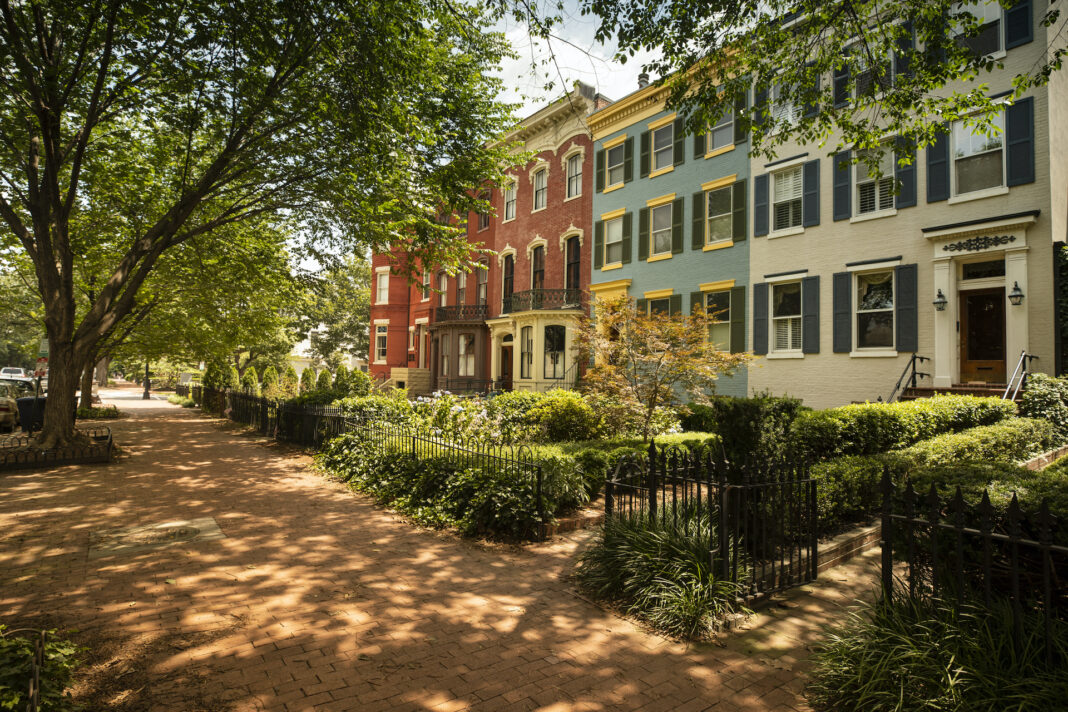
Adulthood comes with many responsibilities, from paying your bills to simply choosing an apartment to live in. So, how do you figure out where you should live and how much you can spend on your rent each month? Here’s where the term “cost of living” comes into play. Learn more about the cost of living in Washington, D.C., to find out what type of apartment you can afford at your budget in the district.
What is the cost of living, and how does it affect me?
The term “cost of living” refers to how much money you need to cover basic day-to-day expenses such as rent, taxes, utilities, food, and health care. The cost of living is also specific to place and time. Some cities are more expensive to live in than others, and the relative costs can go up or down over time. Cost of living is a useful indicator to compare the relative expense of living in different cities.
Cost of living indices can help you compare the cost of living in different places so that you can understand how much you should expect to spend on necessities, such as food and utilities if you live in a given city.
How much should I spend on my rent?
If you know your budget based on your income, you can calculate approximately how much you should be spending on your rent. While you won’t find a one-size-fits-all approach, you can follow a few guidelines when allocating your rent budget.
The 30% rule has been a popular way to figure out how much you should be spending on rent. This rule says you should be spending about 30% of your before-tax income or less on rent. If you earn $5,500 per month in income before taxes, you should be spending $1,650 or less each month on rent.
Keep in mind that your circumstances may change how much of your income you allocate to rent. When you’re first starting out on your own or you’re living in a high-cost area, you may need to spend more than 30% of your salary on rent. Conversely, if you live in an area with a low cost of living or share an apartment, you may get away with spending less than 30% of your income on rent.
What is the relative cost to live in Washington, D.C.?
The cost of living in Washington, D.C., is higher than the national average. According to the cost of living index source BestPlaces, the average cost of living in D.C. is 152.1 compared to the U.S. national average of 100.
The cost of living source Numbeo has Washington, D.C., at 83.88 out of 100, where 100 represents the cost of living in New York City. While living in Washington D.C., can be expensive, the district is still more affordable than cities such as New York City, Boston, or San Francisco.
Your monthly rental payment isn’t the only cost you’ll need to consider when looking for an apartment in the district.
The Numbeo index also finds that a single person in the average Washington apartment spends $147 per month on utilities. Average commuting costs in the city added $13,095 to the average household’s budget compared to the national average of $9,669. Dinner at a full-service restaurant, not including additional costs such as drinks or tips, will run about $40. The average individual’s grocery bill is $304, 10% higher than the national average but 27% less than New York City.
How expensive is an apartment in Washington, D.C.?
Consider the following average prices for apartments in Washington, D.C.:
- Studio apartment: $1,644
- One-bedroom apartment: $2,142
- Two-bedroom apartment: $2,894
- Three-bedroom apartment: $3,425
- Four-bedroom apartment: $3,922
How do I find cheap apartments in Washington, D.C.?
You’ll find plenty of ways to save on rent if you need to live in the Washington, D.C., area but can’t afford the average prices.
First, start your search with Zumper to easily find and apply for available apartments. Zumper lets you filter your searches based on the cost of rent, neighborhood, and other features so that you can find a great apartment that fits your budget.
Living in a cheaper neighborhood also offers more savings. More centrally located neighborhoods, such as the U Street Corridor, Foggy Bottom, and Georgetown, tend to be more expensive. Apartments in places such as Truxton Circle, Anacostia, or Brightwood will cost less.
Another way to find cheaper rent in the area is to look outside of the city itself. You may not be aware of the cost of living near Washington, D.C. suburbs, such as Arlington, Virginia, and Silver Spring, Maryland. You can easily access these locations by the Metro. Additionally, these cities have many of the same city amenities and can be cheaper than housing in the district. Some professionals who work in the district choose to commute to their jobs in the district. For example, the cost of living is significantly lower in Baltimore. Taking the MARC train, you will find the commute from Washington’s Union Station to Baltimore’s Penn Station can be under an hour.
What is the cheapest rent in Washington, D.C.?
On average, the cheapest rent for a studio apartment in Washington is $1,644. However, the cheapest apartment for you will depend on your family’s size, the neighborhood you live in, the amenities you need, and other factors. As far as food and entertainment, there are plenty of cheap eats around the city and things to do in D.C. that don’t require too much money.
Learn more about the cost of living to find out what type of apartment you can afford in Washington, D.C. Then turn to Zumper to explore the apartment options you can discover in our nation’s capital and its suburbs.
Cover image via iStock.com/Pgiam



